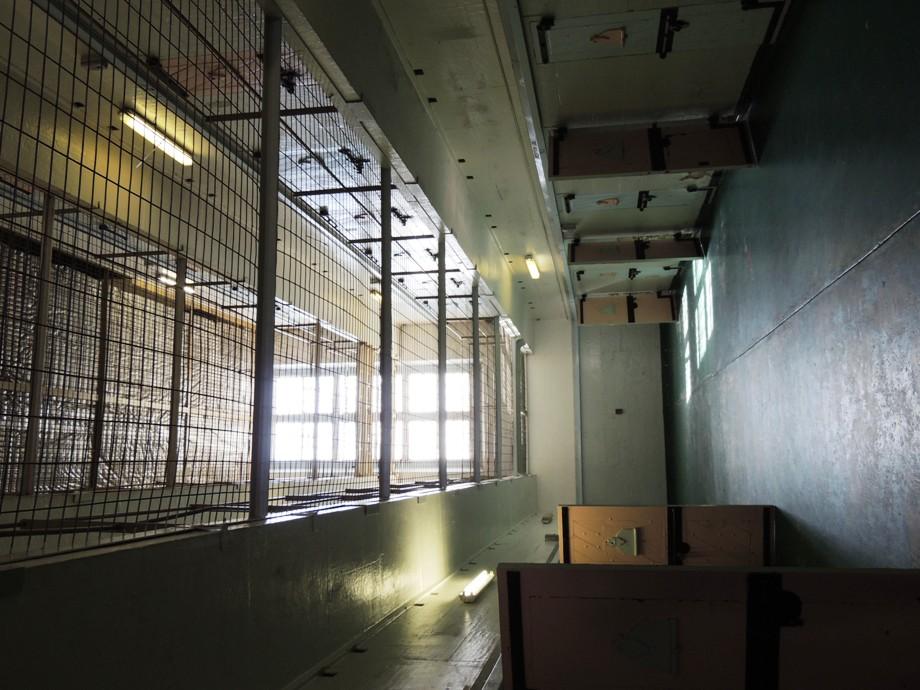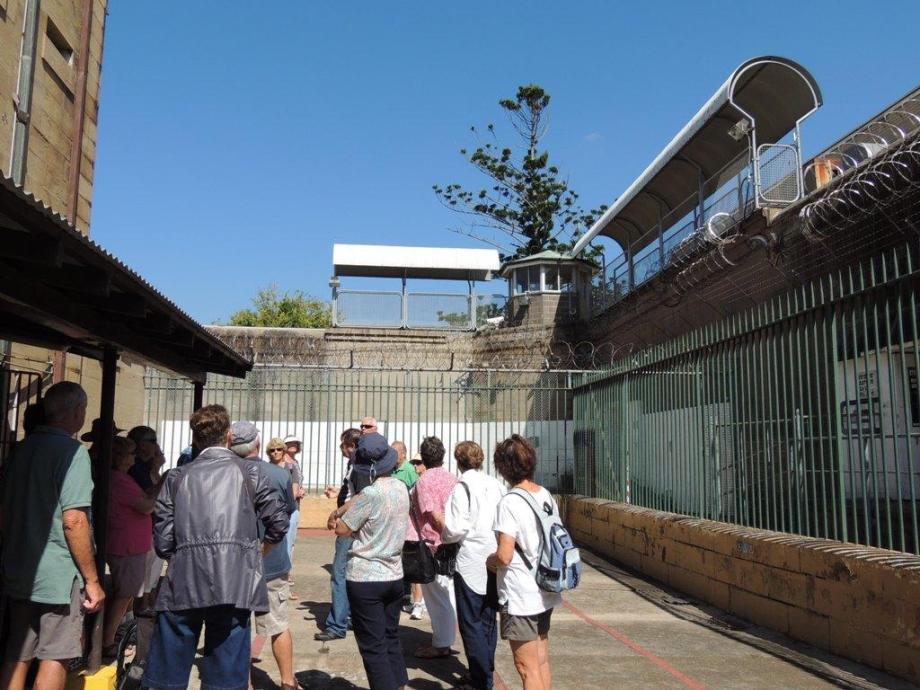July 19 - 25, 2015: Issue 223
Old Maitland Gaol

Old Maitland Gaol - Razor wire and watchtower.
Old Maitland Gaol
By Robyn McWilliam
This sandstone edifice with its watchtowers and barred gates presents a daunting face to John Street. Keith Bush, our guide, is an ex-warden from 1975-95. Back in the 70s he could earn $100,000 a year with penalty rates and overtime. Keith says he was in the job ‘for finance not romance’.

Keith Bush, our guide
As I stand in the inner courtyard double rows of razor wire line the upper reaches of the walls. Their barbs are a ferocious prospect. I’m told the wire comes with the label, ‘for human use only’. Enclosed by tawny sandstone eighteen inches thick, blue sky beyond the towers looks enticing.
Feet scuffing concrete, we enter the gloom of B block. Rows of steel doors with huge padlocks hanging off bars that seal the cells. Home for the inmates was a bed, toilet and basin. A slit window high up, barred and wired, lets little light in. Seventeen hours a day was spent inside.

Inside a cell block
Stairs lead to two upper levels. The top housed Aboriginals who preferred being kept together. The middle level was for murderers and the lower level accommodated gangsters. Although Keith explained some youths were incarcerated in those days for failing to pay parking fines and mixed with hardened criminals.
Out in the yard they’d be bashed if they sat on a regular’s seat. ‘Among prisoners it was survival of the fittest,’ Keith says. An open-topped urinal and toilet structure was where sexual assaults took place not visible from the tower. The victim could be held down by five other men.

Exercise yard
Only guards in the tower were armed. Pock marks in the wall show where bullets struck if there was trouble in the yard. ‘The only other soft thing was human flesh,’ Keith elaborates, ‘and bullets could ricochet.’
The gaol was built to house 200 but serious overcrowding up to 450 inmates led to riots in Keith’s time. He was bashed, hospitalised with broken bones and took eight months to recover before returning to work.
Around the gold rush times of 1850, a vagrancy law meant women and children deserted by men were locked up here. They were in A block with larger cells and bigger windows. The best area to be in was the kitchen as they lived away from the other prisoners. The shower block is a mass of open-fronted cubicles. Keith shows where vents in the ceiling were removed during one escape.
Maitland was the second hardest gaol in the state. Many of the well-known crims such as Ivan Milat and Glover, The Granny Killer did time here.
Keith shows hand-made weapons such as the end of a tooth brush sharpened on concrete. From 1982 women officers were employed and one was stabbed through the shoulder with this. Razor blades fixed to a handle were used to slash the Achilles tendon of an enemy. If a crim had a particularly defining tattoo this could be reshaped in gaol. A snake might become flowers. Prisoners used the motor of a CD player with batteries attached to a biro. An inserted needle dipped in ink pulsated and pierced the skin. Once AIDs arrived the sharing of needles became a health issue. Warders had better control if prisoners had small privileges as these could be withdrawn for bad behaviour.
Old Maitland Gaol closed in 1998 after operating for 150 years. Prisons are now designed in pods holding only 20 to 25 inmates. A guided tour through this eerie complex certainly brings home the brutal reality of life inside and is so informative. If heading to Maitland and you can cope with gruesome detail then a gaol tour might appeal.

Artwork in a cell.
Article and Pictures by Robyn McWilliam, 2015.